Ditapis dengan
E-book Discord : Thinking Sound through Agential Realism
Thinking sound is an activity. Thinking with sound; thinking about sound; thinking through sound: these are all modalities of living with sound as a physical, vibrating reality. Because sound is matter in motion — resonating and reverberating — it resists conceptualization as an object or as a static concept. It cannot be held in a container but rather …
- Edisi
- -
- ISBN/ISSN
- 9781685710477
- Deskripsi Fisik
- 147 hlm
- Judul Seri
- -
- No. Panggil
- 780.72 TOK d
E-book Annunciations : Sacred Music for the Twenty-First Century
In Sacred Music in Secular Society, Jonathan Arnold highlights a strange phenomenon: ‘the seeming paradox that, in today’s so-called secular society, sacred choral music is as powerful, compelling and popular as it has ever been’.1 The explosion of new media through the internet and digital technology has created a new, broader audience for ‘the creative art of Renaissance polyphony …
- Edisi
- -
- ISBN/ISSN
- 9781783747283
- Deskripsi Fisik
- 397 hlm
- Judul Seri
- -
- No. Panggil
- 780.72 JAN a
E-book Powers of Divergence : An Experimental Approach to Music Performance
In approaching this introductory text, I am struck by the difficulty of a begin-ning. When painter Emilio Vedova was teaching at the Accademia di Belle Arti in Venice and one of his pupils would be paralysed in front of the empty canvas, he would dip a brush in the paint and lash it against the white surface. Was the pupil facing the void, and was Vedova’s gesture int…
- Edisi
- -
- ISBN/ISSN
- 9789461662514
- Deskripsi Fisik
- 200 hlm
- Judul Seri
- -
- No. Panggil
- 780.72 DER p
E-book Beethoven and the Piano : Philology, Context and Performance Practice
Czerny’s closeness to Beethoven, and his extraordinary musical abilities, have tendedto encourage confidence in him as a reliable source of information about Beethoven’sexpectations for the performance of his music. But despite his obvious reverence forBeethoven’s works, closer scrutiny suggests that he adopted a progressive rather thancuratorial position towards them: perhaps his concern…
- Edisi
- -
- ISBN/ISSN
- 9783931264963
- Deskripsi Fisik
- 424 hlm
- Judul Seri
- -
- No. Panggil
- 780.72 MIU b
E-book Wits and Interpretation : Keyboard Thoughts
According to a widely held view in 20th- Century aesthetics, a music work is equivalent to the performances that conform to a certain score? And this notion complies with at least three requirements of a satisfactory ontology of the music work, or so it seems?1Thus, although a Beethoven manuscript would command a very high price, it is not very interesting as a unique phys…
- Edisi
- -
- ISBN/ISSN
- 9783631890943
- Deskripsi Fisik
- 466 hlm
- Judul Seri
- -
- No. Panggil
- 780.72 EDL w
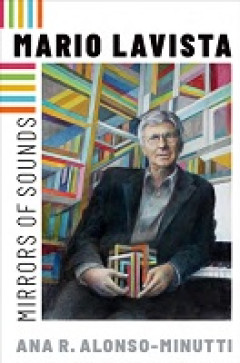
E-book Mario Lavista: Mirrors of Sounds
Composer, pianist, editor, writer, and pedagogue Mario Lavista (1943-2021) was a central figure of the cultural and artistic scene in Mexico and one of the leading Ibero-American composers of his generation. His music is often described as evocative and poetic, noted for his meticulous attention to timbre and motivic permutation, and his creative trajectory was characterized by its intersection…
- Edisi
- -
- ISBN/ISSN
- 9780190212728
- Deskripsi Fisik
- 385 halaman, ilus.
- Judul Seri
- -
- No. Panggil
- 780.72 ALO m
E-book In the Borderland Between Song and Speech : Vocal Expressions in Oral …
The aim of this study was to pursue greater knowledge of vocal expressions in the borderland between speech and song through collaboration between researchers with different approaches, with a view to developing an interdisciplinary method for the analysis of such expressions. The research presented here is the outcome of the research project ‘In the Borderland between So…
- Edisi
- -
- ISBN/ISSN
- 9789198557770
- Deskripsi Fisik
- 345 hlm
- Judul Seri
- -
- No. Panggil
- 780.72 HAN i
E-book From Mummers to Madness : A Social History of Popular Music in England…
The importance of music is difficult to overstate. As historian R W Malcolmson noted, it was the most accessible and democratic of the creative arts, with the ability to give expression to a range of fundamental emotions.4 From a different perspective, musicologist, Philip Tagg emphasised how music and dance are ‘particularly suited to expressing the affec…
- Edisi
- -
- ISBN/ISSN
- 9781862181939
- Deskripsi Fisik
- 452 hlm
- Judul Seri
- -
- No. Panggil
- 780.72 TAY f
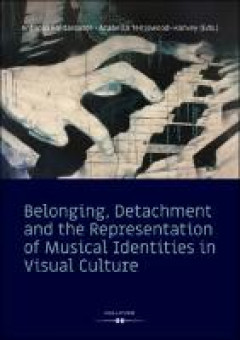
E-book Belonging, Detachment and the Representation of Musical Identities in …
Belonging, Detachment and the Representation of Musical Identities in Visual Culture is a volume of 28 essays exploring aspects of identity/ies in the field of music in visual culture. It is dedicated to the memory of Dorothea Baumann (1946–2022), an energetic champion of music iconographic research. Organised in six sections, the book explores theory and methodology; notation, intertextualit…
- Edisi
- -
- ISBN/ISSN
- 9783990941218
- Deskripsi Fisik
- 692 halaman
- Judul Seri
- -
- No. Panggil
- 780.72 BAL b

E-book Telling Sounds: Tracing Music History in Digital Media Archives
How are music and sound involved in the creation of audiovisual documents? What kind of quantitative and qualitative research permits the examination of music and, more generally, sound for Austrian (music) history on the basis of digitized audiovisual sources? These questions were approached in the interdisciplinary Digital Humanities project “Telling Sounds” at the Universität für Musik…
- Edisi
- -
- ISBN/ISSN
- 9783990940020
- Deskripsi Fisik
- 118 halaman
- Judul Seri
- -
- No. Panggil
- 780.72 BER t
E-book Gaspar van Weerbeke: Perspektives on his Life and Music
The known facts of Gaspar van Weerbeke’s life point to a composer who was one of the most successful and important of his lifetime. Born in the mid-fifteenth century in the city of Oudenaarde in the Burgundian Netherlands, now in the province of East Flanders, he occupied positions of prestige in the best-known musical institutions of the time: the Sforza court in Milan, the Burgundian court …
- Edisi
- -
- ISBN/ISSN
- 9782503584553
- Deskripsi Fisik
- 333 hlm
- Judul Seri
- -
- No. Panggil
- 780.72 LIN g
E-book Pynchon’s Sound of Music
When Penguin announced the upcoming release of Thomas Pynchon’s Inherent Vice in 2009, they heightened the suspense with two marketing gimmicks. One was a series of short movie trailers with Pynchon providing Doc Sportello’s slurred voice. The other one was a playlist of songs that would be mentioned in the novel. The choice of media was fitting since film…
- Edisi
- -
- ISBN/ISSN
- 9783035802337
- Deskripsi Fisik
- 320 hlm
- Judul Seri
- -
- No. Panggil
- 780.72 HAN p

E-book Performing by the Book?: Musical Negotiations between Text and Act
The challenges and limits for musicians dealing with texts. To perform a musical score implies the transformation of a symbolically coded text into vibrant sound. In Performing by the Book? a carefully selected cadre of artist-researchers dissects this delicate act in critical ways. Offering first-hand insights into the notational, structural and interpretative challenges faced by musicians in …
- Edisi
- -
- ISBN/ISSN
- 9789461665591
- Deskripsi Fisik
- 212 halaman, ilus.
- Judul Seri
- -
- No. Panggil
- 780.72 FOR p
E-book Understanding Basic Music Theory
People were talking long before they invented writing. People were also making music long before anyone wrote any music down. Some musicians still play "by ear" (without written music), and some music traditions rely more on improvisation and/or "by ear" learning. But written music is very useful, for many of the same reasons that written words are useful. Music is easier to study and share if …
- Edisi
- -
- ISBN/ISSN
- -
- Deskripsi Fisik
- 241 hlm
- Judul Seri
- -
- No. Panggil
- 780.72 SCH u
E-book Music: A Very Short Introduction
What is music? How is it constructed? How is it consumed? Why do you enjoy it at all? In Music: A Very Short plays Introduction, Nicholas Cook invites us to really think about music and the role it plays in our lives and our ears. Drawing on a number of accessible examples, the author prompts us to call on our own musical experiences in order to think more critically about the roles of the perf…
- Edisi
- -
- ISBN/ISSN
- 9780192853821
- Deskripsi Fisik
- 159 halaman
- Judul Seri
- -
- No. Panggil
- 780.72 COO m

It's How You Flip It: Multiple Perspectives on Hip-Hop and Music Education
The cultural practices of hip-hop have been among people's favorite forms of popular culture for decades. Due to this popularity, rap, breaking, graffiti, beatboxing and other practices have entered the field of education. At the intersection of hip-hop and music education, scholars, artists, and educators cooperate in this volume to investigate topics such as representations of gangsta rap in …
- Edisi
- -
- ISBN/ISSN
- 9783839466674
- Deskripsi Fisik
- 316 halaman
- Judul Seri
- -
- No. Panggil
- 780.72

E-book Auld Lang Syne : A Song and its Culture
The story goes that Irving Berlin, having just penned a song with the title White Christmas, called excitedly to his assistant with the announcement that he had just written his greatest ever song. Indeed, White Christmas was, for a long period, the most commercially successful recorded song of all time, and for many people in the English-speaking world …
- Edisi
- -
- ISBN/ISSN
- 9781800640672
- Deskripsi Fisik
- 361 hlm
- Judul Seri
- -
- No. Panggil
- 780.82 GRA a
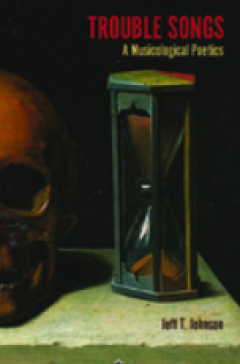
E-book Trouble Songs: A Musicological Poetics
Trouble Songs is a hybrid serial work that tracks the appearance of the word “trouble” in 20th- and 21st-century American music. It reads (and sings) songs and poems, with reference to cultural events ranging from the death of a pop singer to the growth of popular resistance movements. The trouble singer invokes the word “trouble” in place of actual trouble—the song is a spell that co…
- Edisi
- -
- ISBN/ISSN
- 9781947447455
- Deskripsi Fisik
- 206 hlm
- Judul Seri
- -
- No. Panggil
- 780.72 JOH t
E-book Between Air and Electricity : Microphones and Loudspeakers as Musical …
Are microphones and loudspeakers musical instruments?This question is the starting point for my book Between Air and Electricity which tells the story of how microphones and loudspeakers have changed music over the past 100 years through artistic experiments and innovation. It is very common nowadays to have microphones and loudspeakers used on stage next to musicians and conventional musical i…
- Edisi
- -
- ISBN/ISSN
- 9781501327629
- Deskripsi Fisik
- 217 hlm
- Judul Seri
- -
- No. Panggil
- 780.72 VAN b
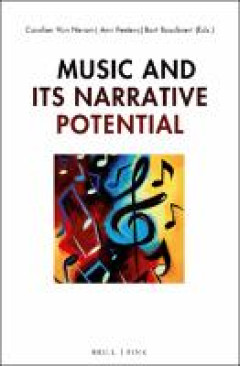
E-book Music and its Narrative Potential
“Music and its Narrative Potential” is a book about musical stories. It is a collection of thoughts on how music evokes narratives through its own medium-specific strategies. This book is a versatile consideration of narratives expressed through music. There are several threads that flow and recur through its different chapters, namely contemporary music, interdisciplinary approaches, conte…
- Edisi
- -
- ISBN/ISSN
- 9783846767726
- Deskripsi Fisik
- 335 halaman
- Judul Seri
- -
- No. Panggil
- 780.72 BOU m
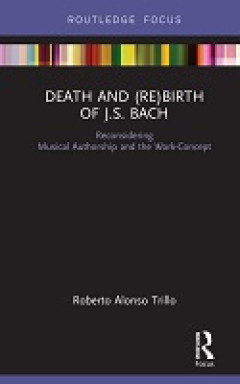
E-book Death and (Re) Birth of J.S. Bach: Reconsidering Musical Authorship an…
While the study and redefinition of the notion of authorship and its relationship to the idea of the literary work have played a central role in recent research on literature, semiotics, and related disciplines, its impact on contemporary musicology is still limited. Why? What implications would a reconsideration of the author- and work-concepts have on our understanding of the creative musical…
- Edisi
- -
- ISBN/ISSN
- 9780429997723
- Deskripsi Fisik
- 159 halaman
- Judul Seri
- -
- No. Panggil
- 780.72 ALO d
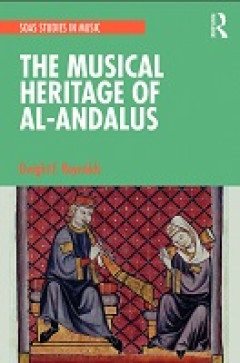
E-book The Musical Heritage of Al-Andalus
The Musical Heritage of Al-Andalus is a critical account of the history of Andalusian music in Iberia from the Islamic conquest of 711 to the final expulsion of the Moriscos (Spanish Muslims converted to Christianity) in the early 17th century. This volume presents the documentation that has come down to us, accompanied by critical and detailed analyses of the sources written in Arabic, Old Cat…
- Edisi
- -
- ISBN/ISSN
- 9781000289527
- Deskripsi Fisik
- 272 halaman
- Judul Seri
- -
- No. Panggil
- 780.72 REY t
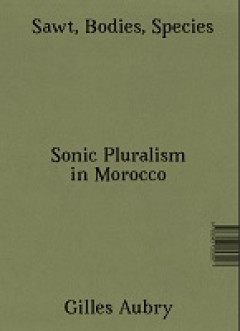
E-Book Sawt, Bodies, Species: Sonic Pluralism in Morocco
How do the Moroccan sound archives of the writer Paul Bowles from the 1970s sound today with the musicians of that time? What does an earthquake in Agadir have to do with a Japanese science fiction film? What sound do stones have? And what do we learn about environmental pollution by listening to the agar agar algae? Drawing on critical sound studies, ethnographic research, and artistic practic…
- Edisi
- -
- ISBN/ISSN
- 9783943253597
- Deskripsi Fisik
- 153 halaman
- Judul Seri
- -
- No. Panggil
- 780.72 AUB s
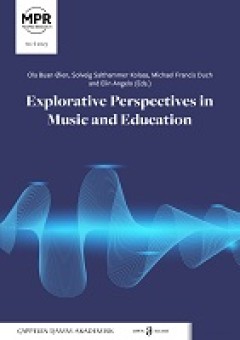
E-Book Explorative Perspectives in Music and Education
The anthology Explorative Perspectives in Music and Education resulted from the MiU22 conference and seeks to support diverse dialogues. The publication, which is multimodal and interdisciplinary, explores how academic, artistic, and pedagogical research and performative work within the realm of music and education intertwine with the central theme. The anthology aims to objectively explore the…
- Edisi
- -
- ISBN/ISSN
- 9788202826390
- Deskripsi Fisik
- 263 halaman
- Judul Seri
- -
- No. Panggil
- 780.72 BUA e

E-Book George Rochberg, American Composer: Personal Trauma and Artistic Creat…
- Edisi
- -
- ISBN/ISSN
- 9781787444461
- Deskripsi Fisik
- 254 halaman
- Judul Seri
- -
- No. Panggil
- 780.72 WLO g
- Edisi
- -
- ISBN/ISSN
- 9781787444461
- Deskripsi Fisik
- 254 halaman
- Judul Seri
- -
- No. Panggil
- 780.72 WLO g
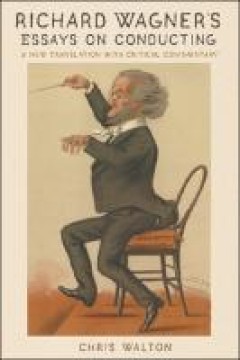
E-Book Richard Wagner's Essays on Conducting: A New Translation with Critical…
The first modern English edition of Richard Wagner's essays on conducting, extensively annotated, with a critical essay on Wagner as conductor: his aesthetic, practices, vocabulary, and impact. Richard Wagner was one of the leading conductors of his time. Through his disciples Hans von Bülow, Hans Richter, Anton Seidl, Felix Mottl, Arthur Nikisch, and their many notable protégés, a Wagnerian…
- Edisi
- -
- ISBN/ISSN
- 9781800101890
- Deskripsi Fisik
- 324 halaman
- Judul Seri
- -
- No. Panggil
- 780.72 WAL r
E-book Music Practices Across Borders : (E)Valuating Space, Diversity and Exc…
Music practices, understood as activities connected to humanly organized sound, extend beyond enclosed spaces both physically and metaphorically, crossing borders of all kinds. When they cross the borders of national states and create stable networks among musicians, fans, people involved in the music business, etc., they can be considered transnational. Cen…
- Edisi
- -
- ISBN/ISSN
- 9783839446676
- Deskripsi Fisik
- 215 hlm
- Judul Seri
- -
- No. Panggil
- 780.72 KAH m
E-book A Philosophy of Cover Songs
Cover songs are a familiar feature of contemporary popular music. Musi-cians describe their own performances ascovers, and audiences use the cat-egory to organize their listening and appreciation. However, philosophershave not had much to say about them.A common philosophical approach is to consider historical positions—for example, asking what Plato or Kant said on a topic. That makes no h…
- Edisi
- -
- ISBN/ISSN
- 9781800644243
- Deskripsi Fisik
- 167 hlm
- Judul Seri
- -
- No. Panggil
- 780.72 MAG a
E-book Music in Evolution and Evolution in Music
I begin with the proviso that, when discussing “evolution” in this book,I am, unless otherwise stated, referring toDarwin’s theory of evolution bynatural selection. This will be defined more formally in §1.5.1. As will bediscussed in §1.8, other theories of evolution have been developed, but thesewill not figure extensively here. At first thought, evolution might seem tobear little rela…
- Edisi
- -
- ISBN/ISSN
- 9781800647374
- Deskripsi Fisik
- -
- Judul Seri
- -
- No. Panggil
- 780.72 JAN m

E-book Music – Media – History : Re-Thinking Musicology in an Age of Digi…
- Edisi
- -
- ISBN/ISSN
- 9783839451458
- Deskripsi Fisik
- 300 hlm
- Judul Seri
- -
- No. Panggil
- 780.7 SAN m
- Edisi
- -
- ISBN/ISSN
- 9783839451458
- Deskripsi Fisik
- 300 hlm
- Judul Seri
- -
- No. Panggil
- 780.7 SAN m
 Karya Umum
Karya Umum  Filsafat
Filsafat  Agama
Agama  Ilmu-ilmu Sosial
Ilmu-ilmu Sosial  Bahasa
Bahasa  Ilmu-ilmu Murni
Ilmu-ilmu Murni  Ilmu-ilmu Terapan
Ilmu-ilmu Terapan  Kesenian, Hiburan, dan Olahraga
Kesenian, Hiburan, dan Olahraga  Kesusastraan
Kesusastraan  Geografi dan Sejarah
Geografi dan Sejarah